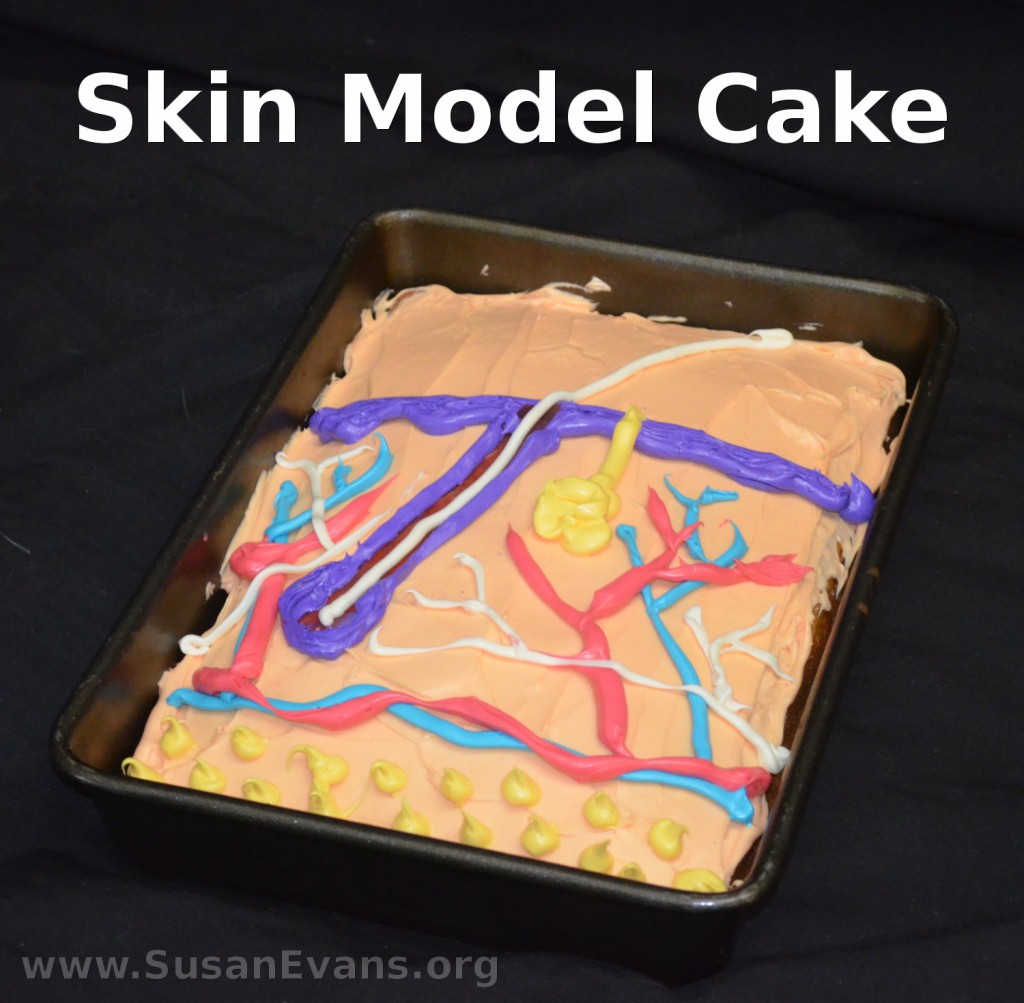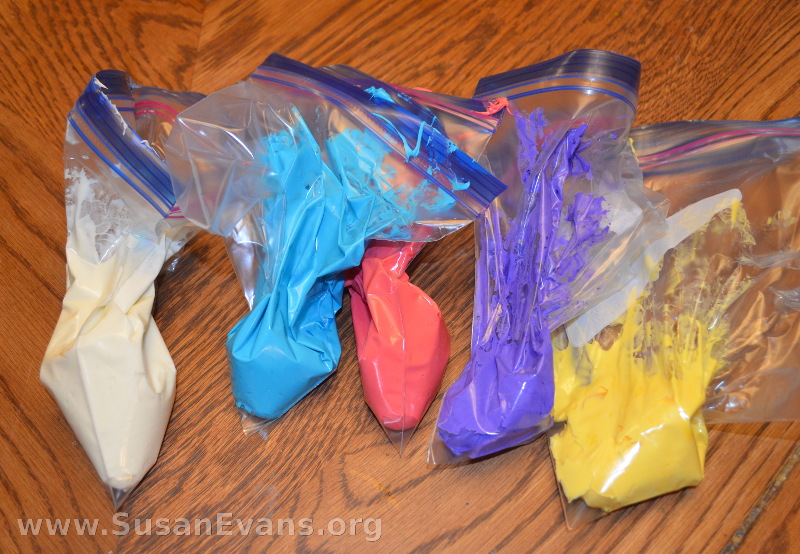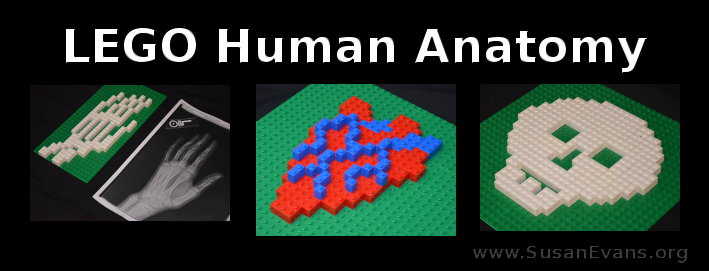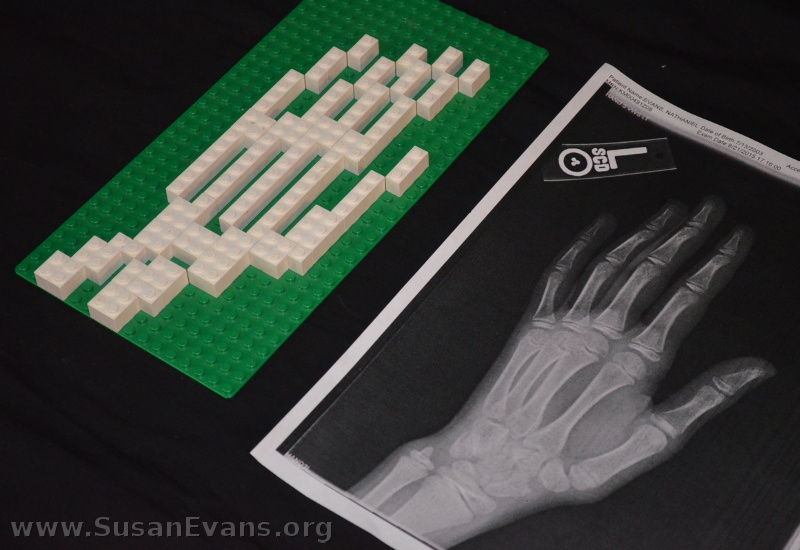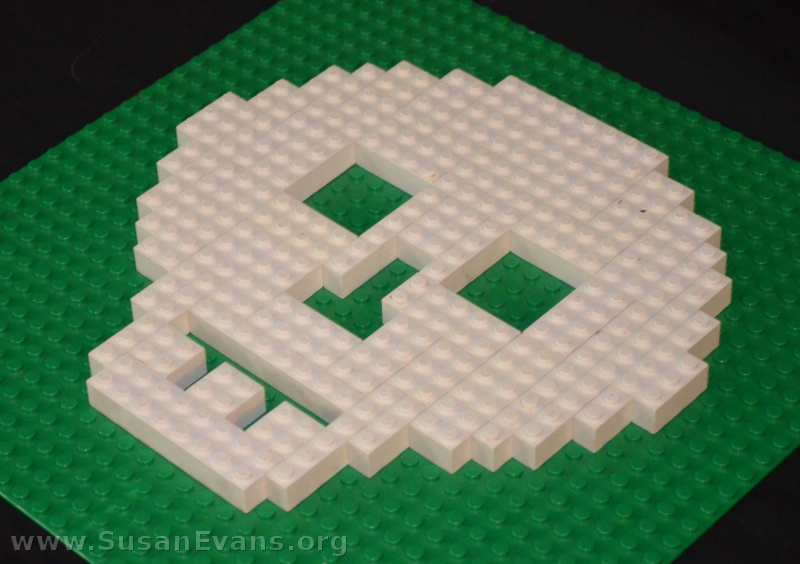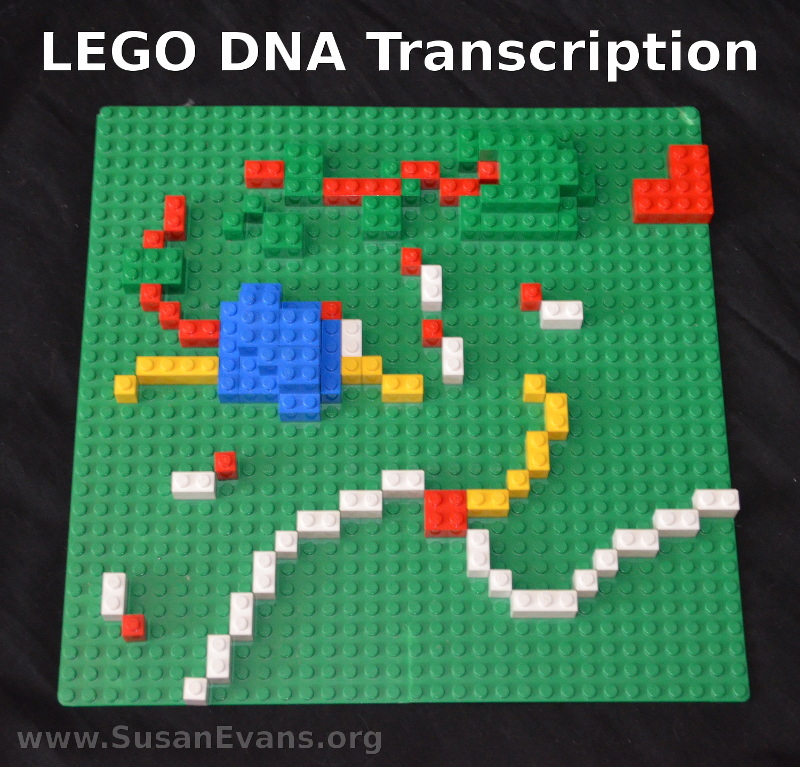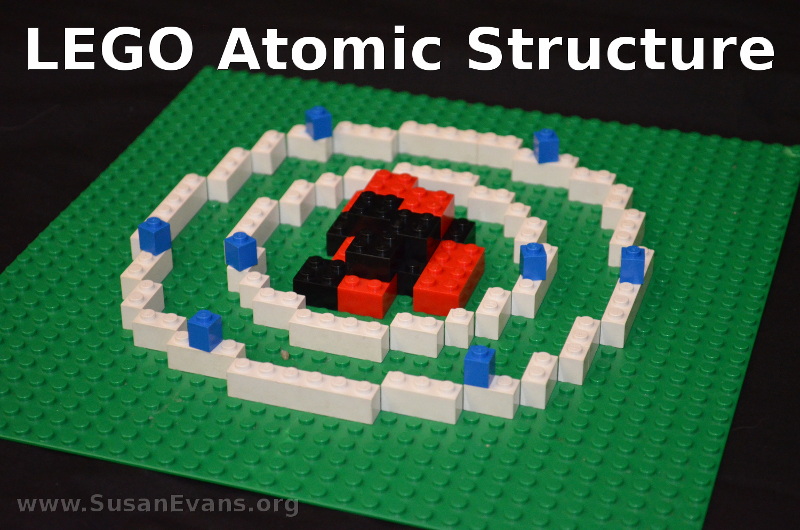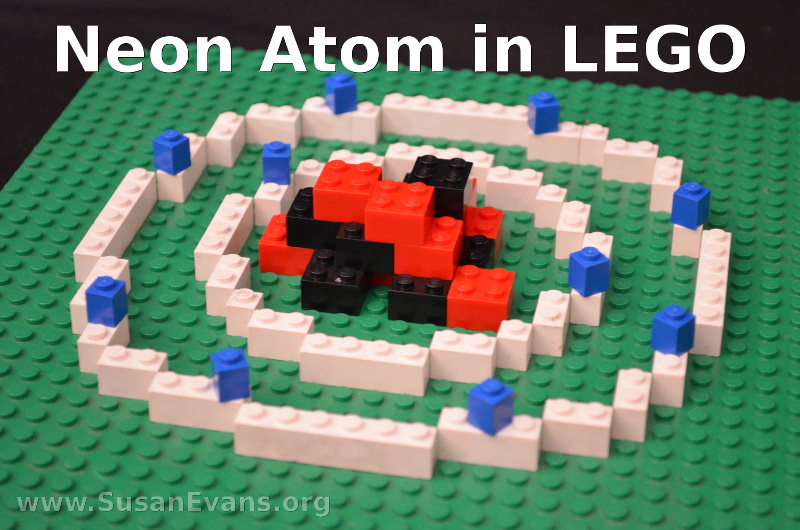When studying the integumentary system in human anatomy, why not create a skin model cake? This is a great way to re-enforce the diagram of the human skin. As you form each part of the human skin with icing, you will review why each part of the human skin is important.
You will want to start by baking a rectangular cake in whatever flavor you want. Grab two tubs of white icing, and empty one of the containers into a bowl. You will want to make a skin color, so you will need a lot of yellow food coloring, and a little bit of red food coloring. Stir with a spoon until you get the right color. Then frost the entire cake with the skin-colored icing.
Now open the second container of icing and divide it into four bowls, but leave some white icing in the container. In the four bowls, place drops of food coloring until you have these vibrant colors: yellow, blue, red, and purple. After stirring, place the icing in small freezer bags. Cut a small hole in the bottom of each.
Now look at a diagram of the human skin, and begin “drawing” the diagram with the different colors of icing:
- The epidermis is the outside layer of skin. Outline it purple, and continue down to the hair follicle, which is like an onion bulb.
- Use white icing to draw a hair up and out of the hair follicle, above the epidermis. You could also use a piece of licorice for the hair, if you would like to add candy.
- Yellow dots at the bottom of the cake represent the fat globules of the hypodermis, which is technically not part of the skin. (The dermis is the area between the epidermis in purple and the hypodermis with yellow dots.)
- While you have the yellow icing in your hand, you might as well make the sweat gland, which is like spaghetti in a blob, going up to a sweat pore on the skin.
- Blue icing is for veins, and red icing is for arteries. White icing is for nerves.
Now you are finished with your skin model cake. Feel free to eat it!
